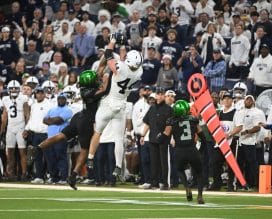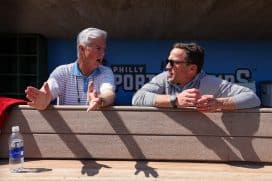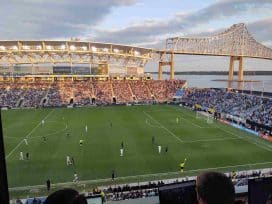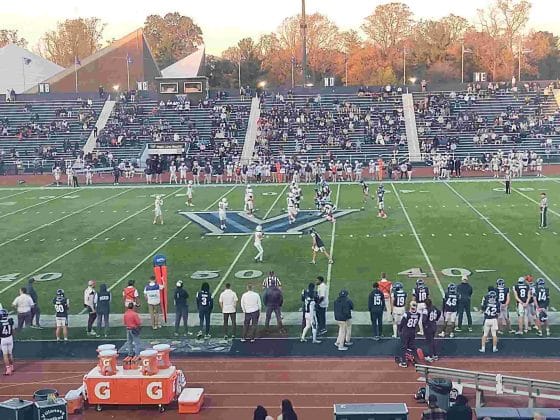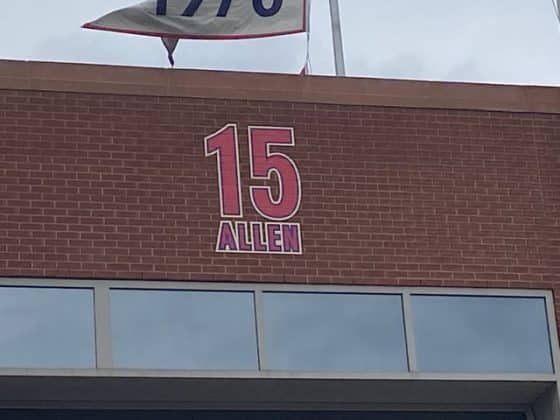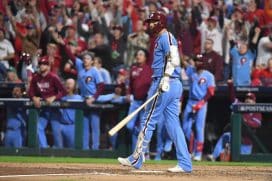Union
Here’s to Looking at You, Kids: The Future of Young Talent in the Union’s Academy
By Siobhan Nolan, Contributing Writer
In 2019, Brenden Aaronson made his debut for the Philadelphia Union. He scored a goal on his debut, and was considered a backup playmaker before injuries and suspensions gave him a chance to break into the team as a regular starter.
In 2021, Aaronson’s transfer from the Union to Austrian club RB Salzburg became the most expensive transfer for an MLS homegrown player, and the 10th most expensive transfer of all time for an American soccer player. At just 20 years old, he’s won more club trophies than fellow young American superstar Christian Pulisic, and as many as United States men’s national team legend Clint Dempsey.
Aaronson might be the latest young American player to start making waves in Europe, but it’s important to not forget where he came from. He’s a product of the Union’s academy, a youth system that has produced some of the most prolific young stars in recent MLS memory. Defender Mark McKenzie is another academy product that departed Philadelphia for Europe, joining Belgian club KRC Genk in 2021. Anthony Fontana has been making a name for himself in the Union’s offense, while Matt Real has been doing the same in the Union’s defense. The Union recently signed a host of academy products to professional contracts, including Paxten Aaronson. With the amount of pure ability in players under 21, the Union are easily the most talented daycare in MLS.
However, possessing so much young talent is a blessing and a curse. Union fans were only able to enjoy Aaronson and McKenzie for just about two years before they decided that they wanted bigger and better things over in Europe. It was a bittersweet moment—there was immense pride that two kids molded by the Union were good enough to get to Europe as quickly as they did, but also immense disappointment that these two players didn’t stick around for longer. MLS can produce these stars, but they can’t hold on to them. But why is that the case?
The answer lies in the bigger scheme of American soccer’s reputation.
The reality is that Europe is where the best young talents develop. As good as Aaronson and McKenzie are, they’re not on the level of Justin Kluivert, who was trained at the elite Ajax academy, or Kylian Mbappe, who was brought up through the youth systems of French clubs AS Bondy and AS Monaco. These players have similar stories—they honed the foundation of their skills at one club before leaving to establish formidable careers at another one. However, their levels of ability are quite different, as evidenced by the clubs they ended up playing for. Austria and Belgium just aren’t where the cutthroat environment is, the one necessary for players to develop to their fullest potential.
American soccer development relies on physical attributes, a player’s stats from last year, and what fancy youth team they play for. The “star” players don’t have to work as hard for their spot, and they are essentially handed the ball by their teammates instead of having to fight for it. In Europe, every kid in these academies was the best player on their team, creating an environment where your spot in the team is never guaranteed. The constant competition and level of ability forces a young player to either get better or get out, and that’s why those players achieve seemingly inhuman levels of talent.
Now, the Union have one of the most prolific and gifted academies in the whole of MLS. Paxten Aaronson, Quinn Sullivan, Jack de Vries, Cole Turner, and many others could very easily find themselves garnering European interest after a couple years’ professional experience. If that happens, as ideal as it would be to keep these young talents in the U.S., it’s almost certain that they’ll want to go overseas to try their hand at becoming the next Christian Pulisic.
With that inevitability, do the Union take advantage of having such an abundance of talent by training them specifically to be shipped off to bolster European clubs, not dissimilar to the academies of Ajax or Borussia Dortmund? It’s not a bad idea, considering that it helps legitimize American players in the eyes of the rest of the world, and furthers a young player’s talent more than MLS ever could at the current moment.
Then there’s the other option: The Union keep developing their youth with the intention of keeping them in the Union system, in the hopes that their talent and abilities will still carry them to making just as good of a name for themselves in the United States. Keeping homegrown youth in the league helps to legitimize MLS as more than just a “retirement league” (coined by European fans to poke fun at the trend of aging European players spending their final professional years in MLS). While there’s still a ton of catch-up to play with European leagues, the change and progress starts with the kids.
It’s entirely too early in the new homegrowns’ careers to start planning out their entire future—Paxten Aaronson only made his debut as an 89th minute substitute on May 30 of this year, while Quinn Sullivan has yet to make his first team debut—but at the same time, these players exist at a time where every minute of development from 16 to 18 years old needs to be utilized. Whether their long-term future lies in Philadelphia, somewhere else in MLS, or across the Atlantic, they need to be ready. Wherever they land, they not only bear the weight of representing themselves in a positive light, they shoulder the responsibility of showing the rest of the world that the U.S. can produce legitimate and dazzling talent. At an age where they’ve only just acquired a drivers license, they’re behind the wheel of a young movement that’s seeking to put U.S. soccer on the world stage—and keep them there for generations to come.

